If you’ve ever wished your KTX ride from Seoul to Busan was just a little bit faster, here’s something to look forward to. South Korea has officially started developing the HyperTube, a next-generation train that could travel at 1,200km/h and shorten the journey to just under 20 minutes.
This new mode of transport is still in the works, but when completed, it could change the way we explore Korea, making quick trips between cities not just possible, but convenient.
Also read: Reasons Busan Stole My Heart (And Should Be on Your Korea Bucket List!)
What the HyperTube is
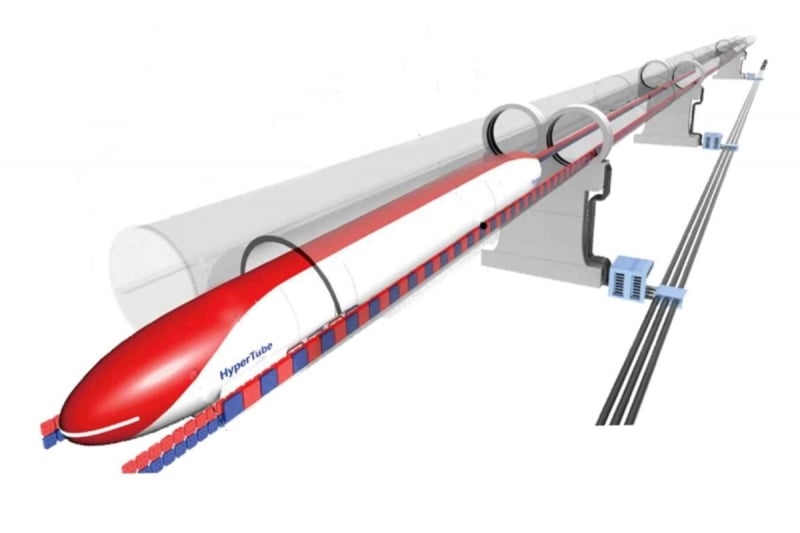
Image Credit: Ministry of Culture, Sports and Tourism (South Korea) Official Website
The HyperTube is a high-speed train system that uses magnetic levitation (maglev) technology to float above the tracks and move through a sub-vacuum tube. The air pressure inside the tube is reduced to between 0.001 and 0.01 atm, which means there is barely any air resistance. This allows the train to reach speeds faster than an airplane, while staying quiet, smooth, and energy-efficient.
Often called Korea’s version of the Hyperloop, this project has been in development since 2009, led by the Korea Railroad Research Institute. In 2020, the team hit 1,019km/h on a scale model, showing that the concept is possible.
Also read: How to Use the Seoul Subway: The Ultimate Guide to Getting Around
How South Korea is making it happen
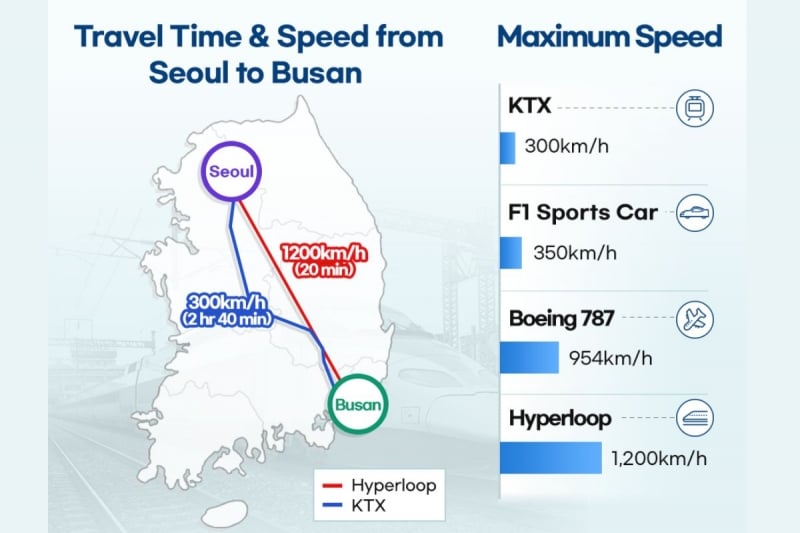
Image Credit: POSCO Group Newsroom’s Official Website
To bring the HyperTube to life, the Korean government is investing ₩12.7 billion (~S$12.6 million) over the next three years. The first phase alone will use around ₩3.6 billion to build and test the main systems.
This includes everything from how the train floats and moves, to how the low-pressure tube is built, and how to keep the ride safe and stable at such high speeds. In short, they are designing an entirely new way of travelling that is faster than planes, more eco-friendly than cars, and less affected by weather than regular trains.
What it means for travellers
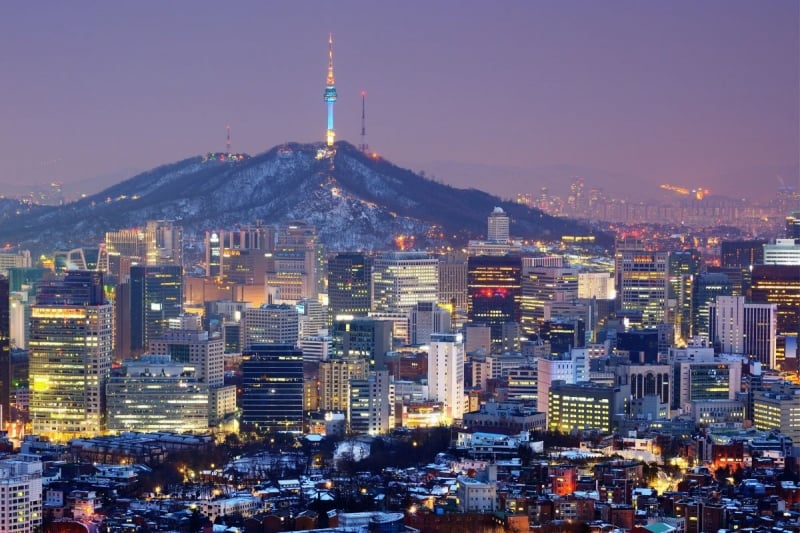
Image Credit: SeanPavonePhoto via Canva Pro
A typical KTX ride from Seoul to Busan takes about 1 hour and 52 minutes. With the HyperTube, that could be cut to just 16 minutes and 15 seconds if the train runs nonstop at top speed. Even with acceleration and deceleration, it would still take less than 20 minutes.

Image Credit: Atakorn via Canva Pro
For travellers, this means you could base yourself in Seoul and still explore places like Busan, Gyeongju, or Ulsan without spending hours in transit. Weekend beach trips, impromptu visits to seafood markets, or hopping across cities could all become part of a regular itinerary.
What comes next
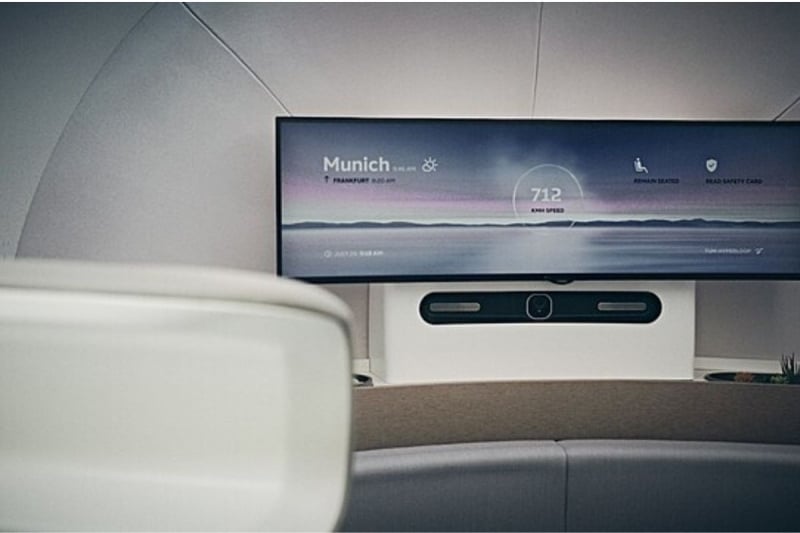
Image Credit: Photo MF via Wikimedia Commons
While there’s no official launch date yet, South Korea is not alone in the race. The United States has tested manned Hyperloop pods, the European Union has built demo tracks, and China recently hit 623km/h in a test vehicle.
But Korea’s HyperTube is still one of the most ambitious projects on the table, and if it succeeds, it could change the way people travel not just in Korea, but across the region.
Final thoughts
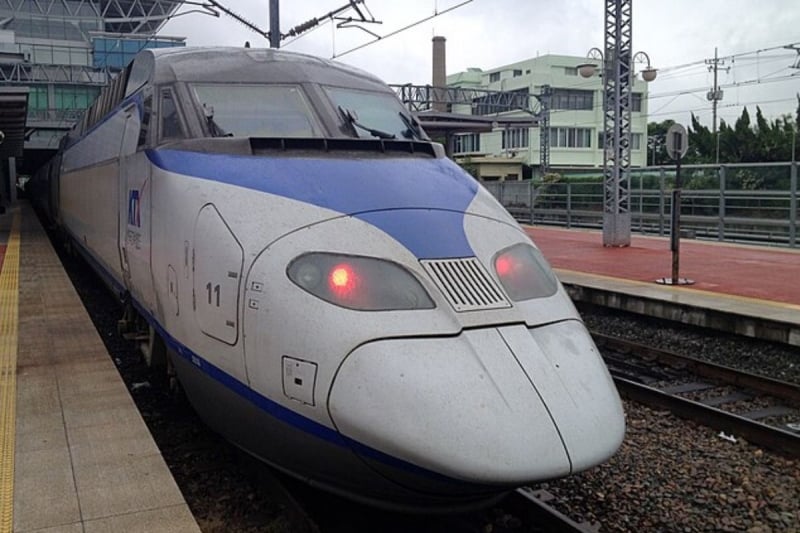
Image Credit: Doug Letterman via Wikimedia Commons
In an age where everything is getting faster, from flights to food delivery, the HyperTube feels like the next step in our pursuit of efficiency. For travellers, it promises more flexibility, more destinations, and less time spent in transit.
But it also invites reflection. When distances shrink, do we experience less along the way? Will the journey start to matter less than the destination?
Maybe the answer lies in balance. The HyperTube is not here to replace slow travel but to offer new possibilities. And as always, it is up to us to decide how we want to move through the world, whether quickly, slowly, or somewhere in between.




